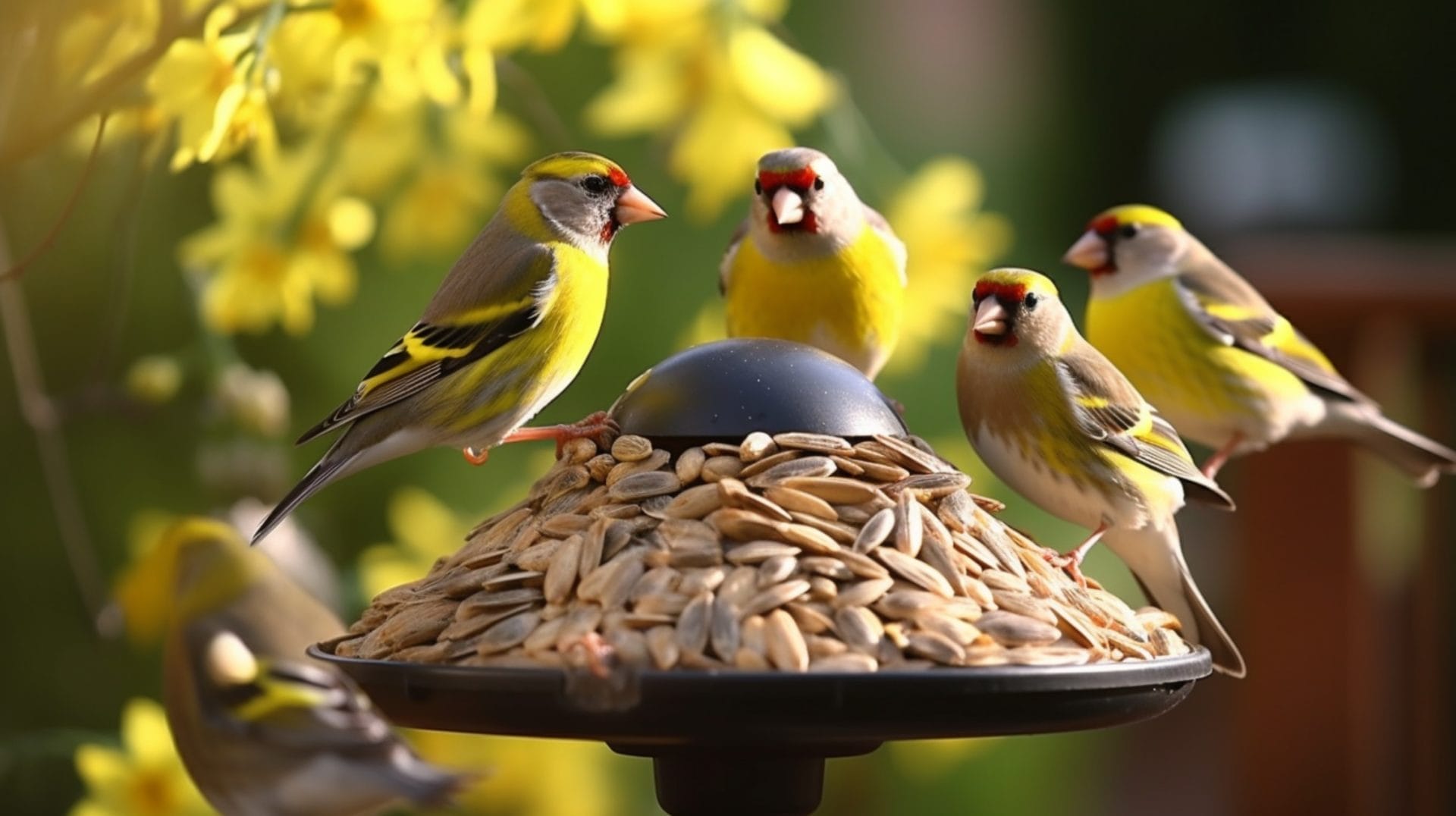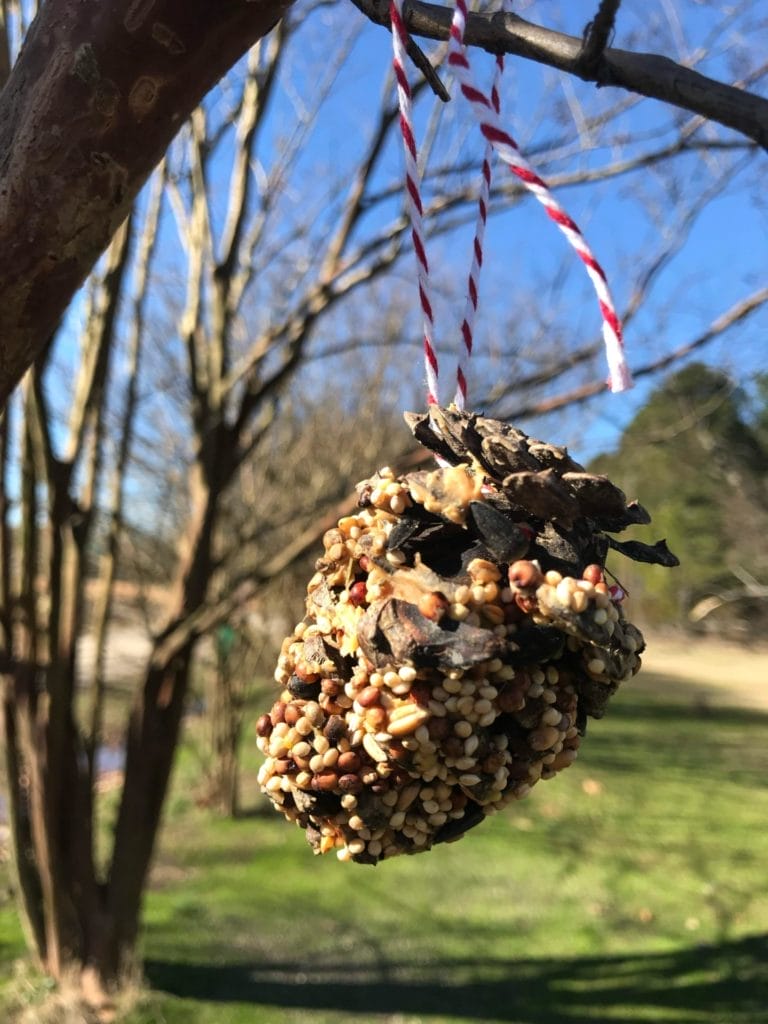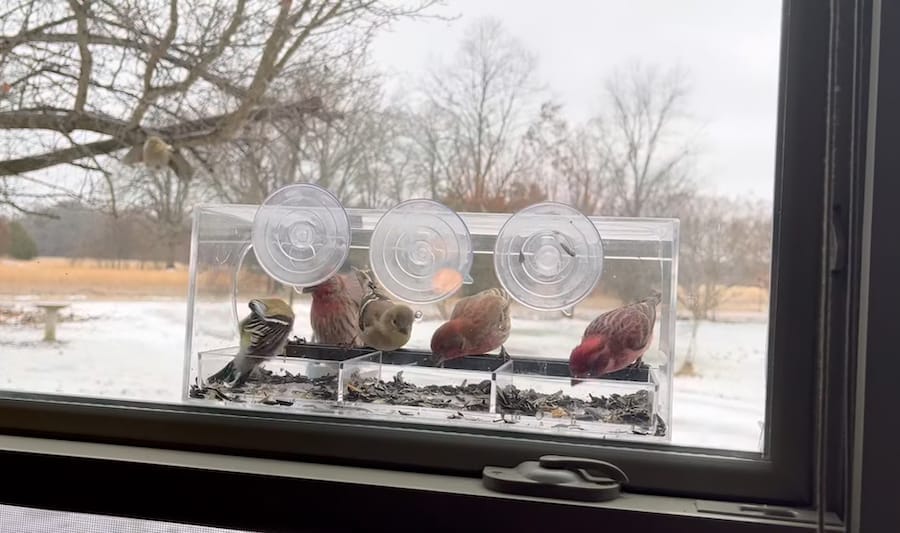

Uh oh...
It appears that you're using a severely outdated version of Safari on Windows. Many features won't work correctly, and functionality can't be guaranteed. Please try viewing this website in Edge, Mozilla, Chrome, or another modern browser. Sorry for any inconvenience this may have caused!
Read More about this safari issue.A Year-Round Guide to Feeding Birds in Arkansas


Winter isn’t over yet, but winter in Arkansas is strange. We can have mornings in the 30s and afternoons in the 70s. It’s not uncommon to have a snowstorm and a thunderstorm in the same week. The peeper frogs have already started singing, and birds, especially waterfowl, are definitely on the move. We’ve probably got a handful of cold days ahead, but the longer daylight and increase in bird activity may have you wondering if it’s still a good time to be feeding birds.
Bird feeding is an opportunity to connect with nature and contribute to the well-being of our feathered friends. Whether you’re a seasoned birder or just starting out, providing food for birds year-round can be immensely rewarding. Watching the birds (and squirrels) play around our feeders is both interesting and entertaining, but you may have questions about what to feed and when.
Arkansas has many native birds and many that pass through during migration. In this guide, we’ll explore tips and tricks for feeding birds throughout the seasons, paying special attention to hummingbirds and waterfowl that are prolific in Arkansas and require special feeding guidelines.

Spring Feeding
In the spring, birds are on the hunt for food and nesting sites. If you have feeders in your yard that have been overlooked during the winter, now is the time to give them a spruce-up along with your other spring cleaning tasks. Here are some tips for feeding birds during the spring:
- Offer a Variety of Foods: Spring is a time of high energy expenditure for birds, so providing a diverse array of foods is essential. Offer a mix of seeds, suet, mealworms, and fresh fruits to cater to different bird species’ dietary preferences.
- Keep Feeders Clean: Regularly clean your bird feeders and bird baths to prevent the spread of diseases. A solution of one part bleach to nine parts water is effective for disinfecting feeders. Rinse thoroughly and allow them to dry completely before refilling.
How to Rescue a Baby Bird If You Find One

Summer Feeding
As summer rolls along, birds are busy raising their young and teaching them to fly. Providing food and water during this time can help support nesting pairs and their offspring. Here’s how you can help:
- Offer High-Energy Foods: Birds need plenty of energy to keep up with the demands of parenting. Offer foods rich in protein and fat, such as black oil sunflower seeds, nyjer and suet.
- Provide Shelter: Place feeders and bird baths near trees or shrubs to provide birds with shelter from the summer heat and predators.
- Keep Water Sources Clean: Clean and refill bird baths frequently to ensure birds have access to fresh, clean water for drinking and bathing. Adding a dripper or mister can attract more birds to your backyard oasis.
Arkansas Backyard Birds: Summer Residents

Fall Feeding
As temperatures start to cool down, many birds begin their migration southward. Although many of our summer residents head further south, Arkansas becomes an oasis for their northern relative. Fall is a critical time for replenishing energy stores before the long journey ahead and can also be a welcome invitation to arriving birds. Here are some fall feeding tips:
- Offer High-Calorie Foods: Birds need to pack on extra fat for their journey, so offer foods like peanuts, mealworms, and suet cakes to help them fuel up.
- Keep Feeders Stocked: With many birds passing through during migration, keeping your feeders well-stocked can attract a variety of species to your yard.
- Clean Up Fallen Seeds: Rake up any fallen seeds and debris from beneath your feeders to prevent the spread of mold and bacteria.

Winter Feeding
Arkansas winters are relatively mild but still, food sources can become scarce. Providing food and water can give birds a little boost to survive our unpredictable weather and constantly fluctuating temperatures. Here’s how:
- Offer High-Energy Foods: During winter, birds need foods that are high in fat and calories to help them stay warm. Consider offering suet, peanuts and black oil sunflower seeds.
- Use Heated Bird Baths: Installing a heated bird bath can provide birds with access to water even during freezing temperatures. Make sure to keep the water clean and unfrozen.
- Avoid Disturbing Roosting Birds: Be mindful of disturbing roosting birds, especially on cold nights. Keeping noise and activity near feeding areas to a minimum can help birds conserve energy.
Backyard Arkansas Birds: Winter Residents
8 Winter Birds to Observe in Arkansas

Feeding Hummingbirds
The Ruby Throated Hummingbird is the most common hummingbird in Arkansas. Each spring, from late March through April, the number of hummingbirds in Arkansas greatly increases as they migrate northward from their summer homes. The spring and early summer are the most important time to focus on feeding these tiny birds. Special feeders filled with sugar water provide them with the energy they need to travel and raise their young. A few things to remember when feeding hummingbirds include:
- Use Natural Nectar: Offer a solution of one part sugar to four parts water as a natural nectar substitute. Many commercial products contain red dye, which can be harmful to hummingbirds and aren’t necessary. Skip the dye!
- Keep Feeders Clean: Clean hummingbird feeders regularly with hot water and a bottle brush to prevent mold and bacterial growth. Especially in warmer times, feeders may need to be changed on a daily basis and thoroughly cleaned every few days.
- Provide Perches: Place hummingbird feeders near perches to give these tiny birds a place to rest between feedings.

Feeding Waterfowl
Especially in the winter months, Arkansas is teeming with waterfowl like ducks, geese and swans. More than a few times, I’ve overheard people mentioning that they were saving up their bread heels to feed the birds. While it’s a common tradition, feeding bread to waterfowl like ducks and geese is actually harmful and should be avoided.
- Offer a Balanced Diet: Waterfowl benefit from a varied diet that includes grains, greens and aquatic plants. Avoid feeding them bread, as it offers little nutritional value and can lead to health problems.
- Keep Water Clean: If you’re feeding waterfowl near a pond or lake, make sure the water is clean and free of pollutants.
- Limit Feeding to Small Amounts: While it’s enjoyable to feed waterfowl, it’s essential not to overfeed them. Offer small amounts of food to prevent dependency and overcrowding.
Birding in Arkansas is so much fun. It’s a multi-generational hobby that the whole family can be involved in. My young son has learned to identify many birds right in our own yard and loves to fill the feeders with his grandmother. Through this shared experience, we’ve cultivated a deeper appreciation for the beauty and diversity of our avian friends. By responsibly feeding birds year-round and creating a welcoming environment for them, we not only enhance our own enjoyment of nature but also play a small part in supporting bird populations for generations to come.
Join the Conversation
Leave a Comment
One response to “A Year-Round Guide to Feeding Birds in Arkansas”
 Leave a Reply
Leave a Reply
We do the work.
You check your email.
Sign up for our weekly e-news.
Get stories sent straight to your inbox!








 Leave a Reply
Leave a Reply
[…] Feathered Travelers […]